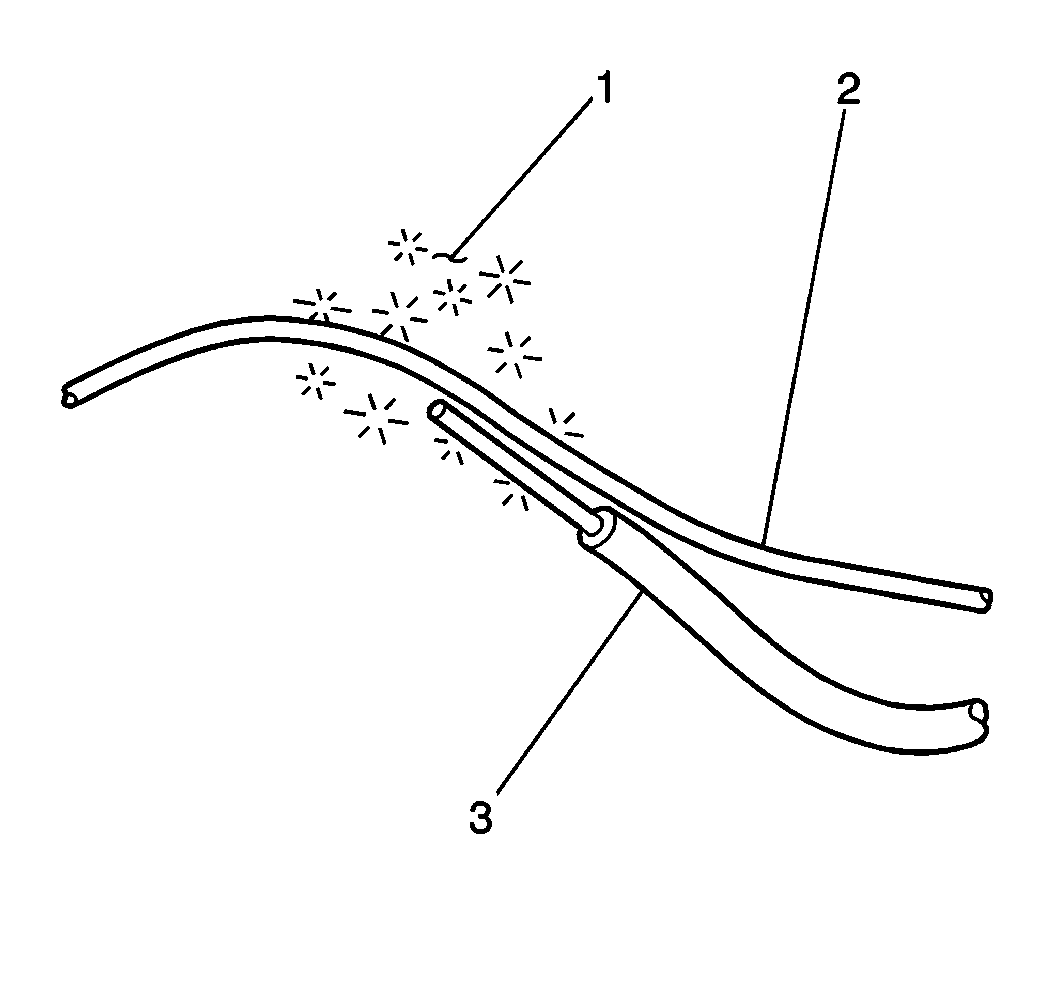Important: Before measuring the resistance of the antenna, remove the negative lead of the battery and zero the J 39200 digital multimeter (DMM). When inspecting the resistance, cautiously wiggle the lead-in tip and cable. If the resistance does not match the resistance listed, some portion of the lead-in is intermittent and needs to be replaced.
The antenna sniffer may be used along with the vehicles radio in order to locate hot spots that may be generating radio noise interference.

The antenna sniffer may be made from a old antenna lead in cable by cutting off the antenna base lead in. Then strip off approximately 6 cm (2 in) (3) of the outer coax shield (black insulation and braided wire) leaving the inner white insulator (1) and the center conductor wire (2). Use the longest antenna lead in as possible (4), for best results.

By plugging the antenna sniffer into the radio antenna socket you can use the stripped end in order to search for hot spots.
Important: When using the antenna sniffer keep your hand away from the stripped end while searching for noise.
Perform the following steps in order to use the antenna noise sniffer:
- Identify the complaint noise.
- Disconnect the antenna lead in and plug the antenna sniffer (3) into the radio antenna socket.
- Turn up the radio volume.
- Search for the noise source (1) along the wiring harness (2).
